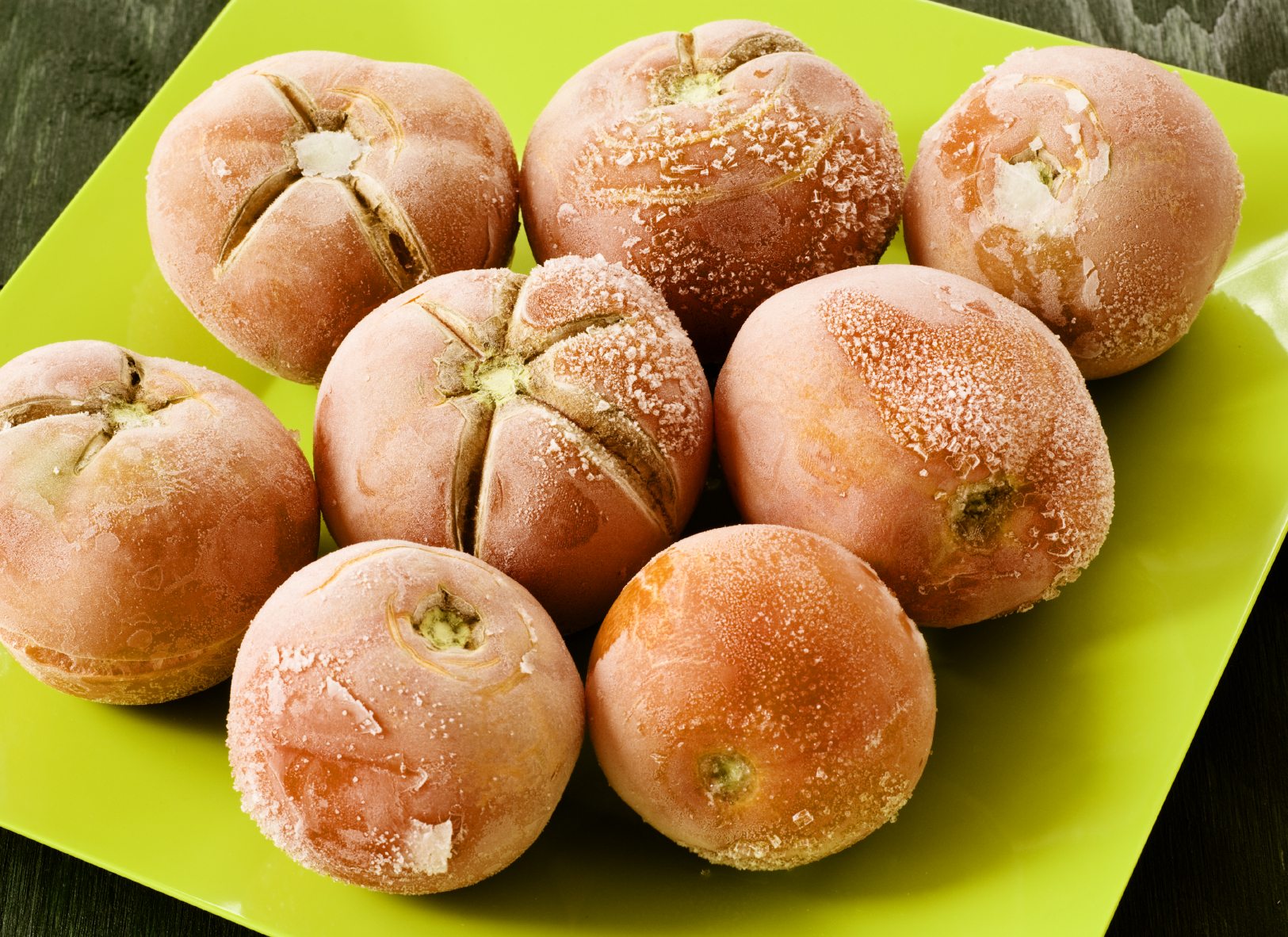Can Fresh Tomatoes Be Frozen – How To Freeze Garden Tomatoes

Here in the Pacific Northwest, we had an unseasonably extra hot summer. Global warming strikes again. In our garden, however, we reaped the benefits. Peppers and tomatoes, which are generally lukewarm producers, went absolutely bonkers with all the sunshine. This resulted in bumper crops, far too many to eat or give away. So, what do you do with extra produce? You freeze it, of course. Keep on reading to find out how to freeze garden tomatoes.
How to Freeze Garden Tomatoes
I like to think of myself as an excellent, if sometimes lazy, cook. I cook pretty much every night of the week not only because I can but to save money and ensure that we are eating healthily – at least one meal each day. Same reason for planting a veggie garden. So, with this year’s bumper crops and preserving tomato harvest, I had every intention of canning the summer’s bounty. I got busy. Or maybe I’m just really lazy. Or maybe the fact that we refer to our kitchen as “the galley” because it’s so small I can literally turn from sink to stovetop without taking a step, put me off. Whatever the reason (I’m sticking with too busy), I never got around to canning but I also couldn’t stand the thought of wasting all those gorgeous tomatoes. This conundrum got me to wonder, can you freeze fresh tomatoes? Lots of other produce can be frozen so why not tomatoes? Does it matter what type of tomato can be frozen? After a little research, which assured me that you can freeze fresh tomatoes, I decided to try it.
Freezing and Preserving Tomato Harvest
There are a couple of different methods for freezing tomatoes from the garden. I, of course, settled on the easiest approach. I washed the tomatoes, dried them, and then plunked them into large zip-loc baggies and threw them in the freezer. Yep, that’s all there is to it. The really cool thing about freezing tomatoes from the garden in this manner is that once they are thawed, the skins slip right off! Preserving the tomato harvest in this way does require either a larger freezer, which we don’t have in “the galley” or a chest freezer, which we do. If you lack extra freezer space, you can also pre-prep them to save some space. Wash the tomatoes and cut them into quarters or eighths then simmer them for five to ten minutes. Push them through a sieve or pulse them in the food processor. You can then season them with a bit of salt if you want or just pour the puree into a container and freeze. Be sure to leave a bit of space in the container so that when the puree freezes it has somewhere to go. You can also pour into freezer zip-loc bags and freeze on a cookie sheet, flat. Then the flat frozen puree can be easily and neatly stacked in the freezer. Another method is to stew tomatoes prior to freezing. Again, wash the tomatoes, remove stems, peel, and then quarter them. Cook them, covered, for 10 to 20 minutes. Cool them and pack them as above for freezing. Oh, as to what types of tomatoes can be frozen, that would be any type. You could even freeze cherry tomatoes. This type of preserving works well if you want to use the frozen tomatoes in sauces, soups, and salsas, but don’t expect your frozen tomatoes to work well on a BLT sandwich. You would have a devil of a time slicing a thawed tomato that has been frozen; it would be a slushy mess. As for me, I definitely see some homemade red sauce in my future.
Gardening tips, videos, info and more delivered right to your inbox!
Sign up for the Gardening Know How newsletter today and receive a free copy of our e-book "How to Grow Delicious Tomatoes".

Amy Grant has been gardening for 30 years and writing for 15. A professional chef and caterer, Amy's area of expertise is culinary gardening.
-
 Create A Romantic Garden Straight Out Of Bridgerton: Regency Era Romance In Your Garden
Create A Romantic Garden Straight Out Of Bridgerton: Regency Era Romance In Your GardenTry some romantic garden ideas straight out of Bridgerton. Flowers and gardens in the Regency era were lush and charming and you can get the same look!
By Bonnie L. Grant
-
 Moody Blooms For Spring: 8 Types Of Black Flowers To Add Drama To Spring Displays
Moody Blooms For Spring: 8 Types Of Black Flowers To Add Drama To Spring DisplaysFrom midnight burgundies to inky violets, several types of black flowers can enrich and embolden a spring display. Try these brooding bloomers for a moody garden
By Tonya Barnett